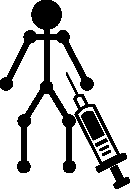Face Lift
Threads vs Surgery
A face lift is a major surgical procedure involving a general anaesthetic, long operating time, prolonged downtime with significant bruising, swelling and pain and not to mention costs a lot of money. The majority of us are not prepared to go down that route. However, as we age and develop sagging skin, we all want to do something to provide a little lift and rejuvenation.
Thread lifts are a non-surgical alternative to the traditional face lift. Of course the results of a thread lift are not comparable to that of a full face lift. However, at a fraction of the cost, quick treatment time, no general anaesthetic, minimal bruising and pain, and practically no downtime, it is a fantastic option for many.
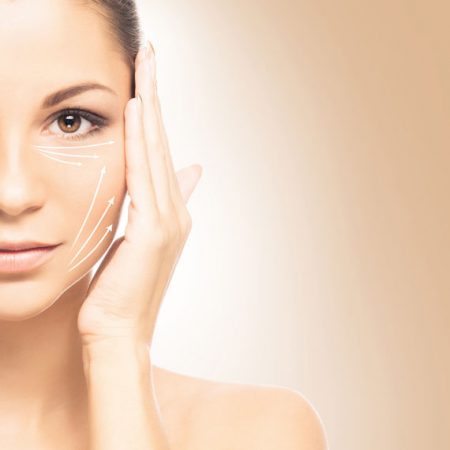
How do Threads provide lift?
At Rejuvence Clinic we offer two different types of thread treatment that can help to lift sagging skin, increase collagen production and rejuvenate the face. We offer PDO threads and the Spring Thread® treatment.
PDO threads were originally developed in South Korea. They are special surgical sutures used for stitching in operations. These threads, when inserted underneath the skin, are absorbed over a period of 3 months and replaced with strands of collagen and elastin. Collagen provides skin with its tensile strength. As we age we lose collagen and elastin and this results in it sagging. New collagen production helps to tighten and lift skin.
The Spring Thread® is a permanent thread that is very similar to human skin. It is composed of silicone and consists of specially moulded round cogs. Once inserted the cogs engage with the underside of the skin and when secured help to lift sagging skin. Spring Thread® also stimulates collagen production and helps to rejuvenate the skin.
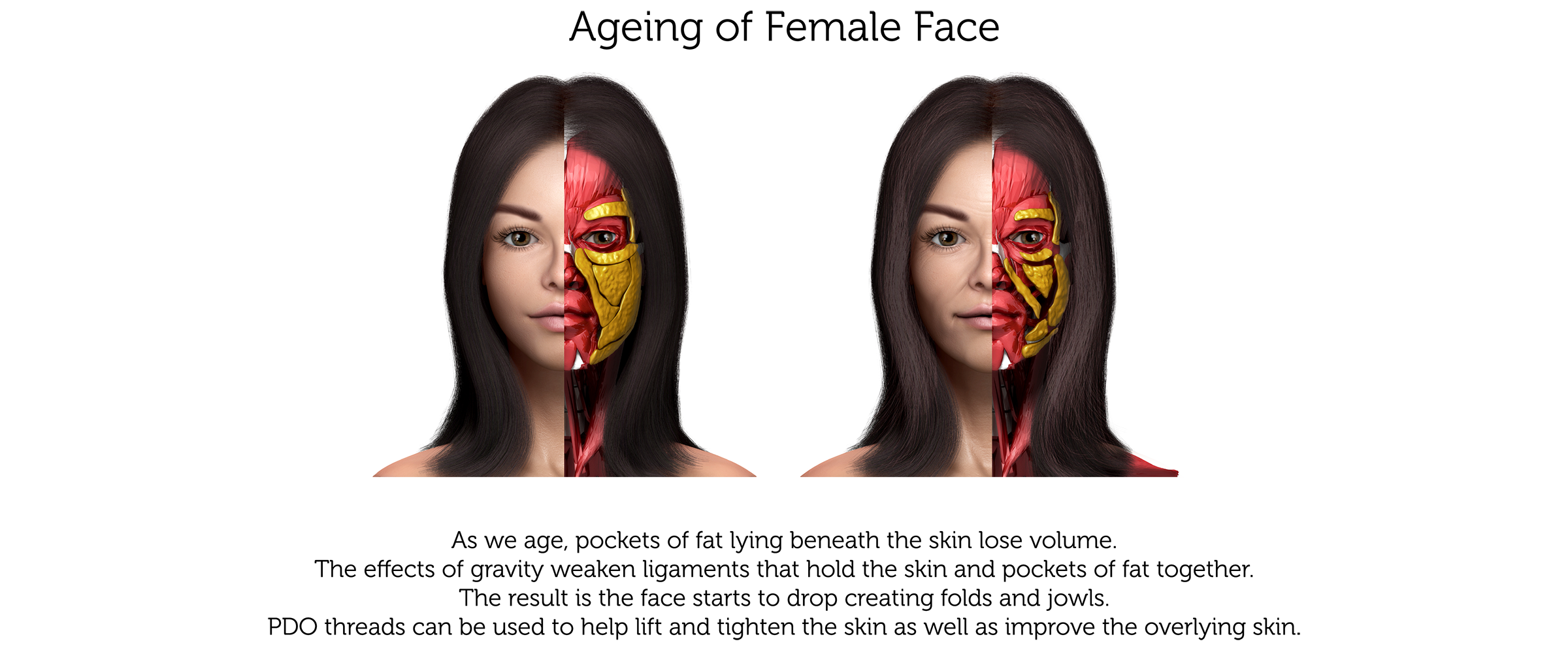
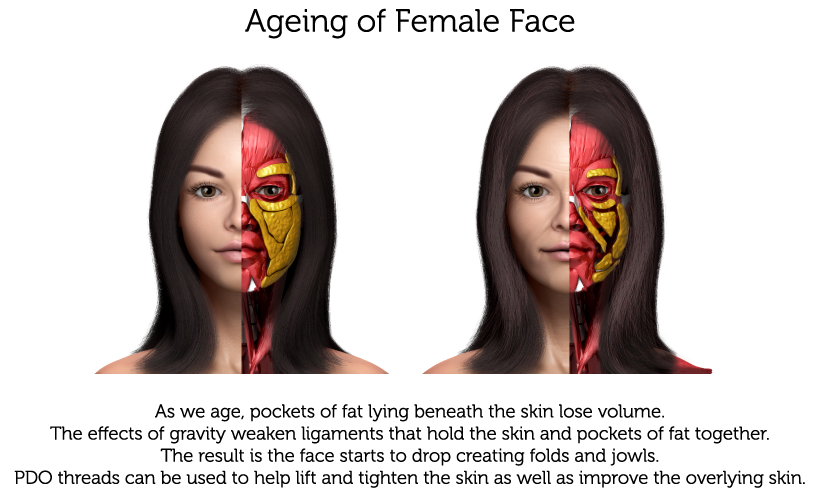
PDO Threads vs Spring Thread
There are differences between the Spring Thread® and PDO Threads when it comes to a non-surgical face lift. It is very important to use the most suitable thread for your treatment and we can help you with this at Rejuvence Clinic.
PDO threads are temporary and get absorbed within 3 months whereas the Spring Thread® is a permanent thread. PDO threads are more rigid and not as strong. Effects last for 12 to 18 months and provide subtle lift. They are more suited to younger patients.

The Spring Thread® is much stronger but also very similar to your skin in that it is quite flexible. The lift is much greater and lasts much longer – up to 5 years. It is more suitable more older patients with more saggy skin. Both threads result in new collagen production.


How do threads provide a face lift?
Using a combination of ‘cog’ and ‘screw/twisted’ PDO threads it is possible to carry out a non-surgical face lift. ‘Cog’ threads can be inserted below the skin over the cheek regions heading down towards the angle of the mouth and even jaw. These threads are then anchored just in front of the ear either side and can be tightened to provide a lifting effect to the whole of the mid face and even sharpen up the jaw line. This is then combined with a mesh arrangement of ‘screw/twisted’ threads running across the ‘cog’ threads to reinforce this lift. Over 3 months all threads are absorbed and replaced with strands of collagen, maintaining the lifting effect for up to 18 months and also helps to rejuvenate the skin.
The Spring Thread® is inserted in a similar manner to PDO threads. Spring Threads® consist of a biocompatible silicone matrix with moulded round cogs. These cogs anchor into the tissues just below the skin. Once inserted they can be tightened and sagging skin lifted. The Spring Thread® is much thicker and stronger than PDO threads. Hence much fewer are needed. The lift achieved is much greater and lasts for longer. Despite being, permanent, treatment can be repeated and there is normally no need to remove the threads.
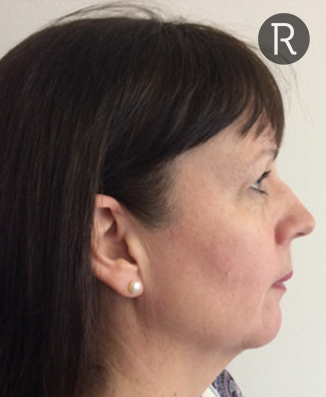

©Individual results may vary.
Thread lifts are a non-invasive procedure and is not particularly uncomfortable. At Rejuvence we normally apply topical anaesthetic cream to the face first. After this has been left on for 15 minutes we mark up the thread insertion points and then inject a little local anaesthetic here. This can sting initially but once it takes effect we are able to comfortably insert the threads. For Spring Thread we normally infiltrate a large amount of local anaesthetic to ensure the procedure is as comfortable as possible.
PDO thread treatments normally last for upto 18 months. PCL threads last a little longer – upto 24 months. As mentioned above, all threads are absorbed within about 3 months and replaced with collagen. In cases where a lot of lift has been achieved with ‘cog’ threads, it is important to realise that this initial lift will not last for very long. Many clinics use multiple ‘cog’ threads to give excellent lift initially but are wound too tight and there is a sudden drop after a few months. At Rejuvence we prefer a combination of ‘cogs’ and ‘screw/twisted’ threads. The ‘cogs’ provide some immediate lift and the remaining ‘screw/twisted’ threads provide a long-term collagen mesh framework that will tighten over time and reinforce the ‘cogs’.
A Spring ThreadⓇ lift typically lasts for between 3 to 5 years. This is much longer than a PDO thread lift. In addition there is also new collagen stimulation resulting in facial rejuvenation. In published long term studies a large number of patients have reported continuing improvements over the 1st year. In addition, thanks to the unique biocompatible nature of this thread, fibrosis occurs in and around the thread allowing it to really embed into the face naturally and hence results in longer lasting effects.
PDO thread lifts are a relatively safe procedure with few complications. However, it is important to be treated at a reputable clinic by an aesthetic practitioner who knows what they are doing and have a thorough understanding of the anatomy of the face. Following the procedure it is possible to have some bruising and swelling. We routinely provide complimentary Dermalux LED sessions after our PDO thread treatments. This helps reduce the amount of bruising and can speed up the healing process. Sometimes threads can migrate out of the skin and this then needs to be removed. Rarely, ‘cog’ threads are placed too superficially and can be seen and/or felt under the skin. There can also be puckering of the skin. In each of these cases, normally things resolve on their own but if need be we can remove the threads.
As with PDO threads, the Spring ThreadⓇ is a relatively safe procedure. Despite being substantially thicker than PDO threads, as long as they are inserted into the right area and sufficiently deep, the threads are not visible through the skin. In addition thanks to their unique elasticity, they glide with the skin during facial movements such as smiling. They feel more comfortable than PDO threads. With Spring ThreadⓇ it is very important to maintain excellent sterile technique throughout. Antibiotics are routinely provided afterwards. It is also extremely important to maintain excellent hygiene to reduce the risk of infection. Those with pets at home should not be considering this treatment as the risk of infection is much higher. If need be the threads can be removed and readjusted but this is usually extremely rare.
After a PDO thread lift, there is normally no bunching up of the skin. However, with the Spring ThreadⓇ face lift, due to the extra lift achieved there can be a fold of skin that appears around the insertion points close to the ear. This is nothing to worry about as the skin normally reorganises itself and flattens out. In cases where there is a lot of excess skin due to extreme laxity we can cut this away and stitch it similar to a face lift but this is rarely needed.













